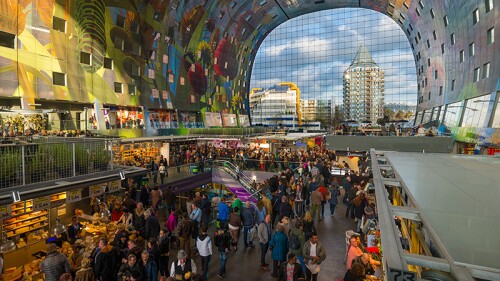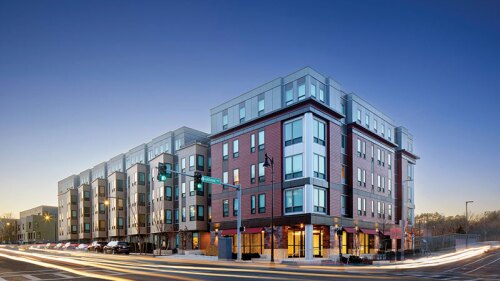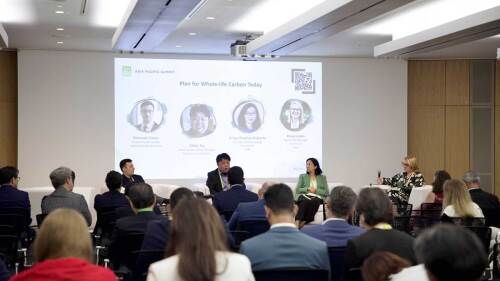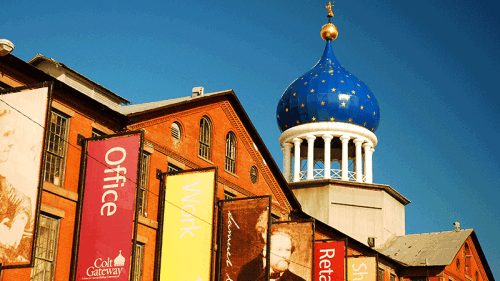Topics
Capital Markets and Finance
Thanks to one of the largest public/private partnerships ever assembled in California, Orange County now boasts cutting-edge, energy-efficient government buildings.
Rising interest rates have scrambled the plans of many real estate investors and finance leaders. No one knows how much more interest rates will rise, how much property prices will fall, or whether the U.S. economy will dive into a recession, experience a mild downturn, or even continue to grow. Industry leaders discussed this and more at the 29th ULI/McCoy Symposium on Real Estate Finance, a gathering of real estate leaders held in December.
In a capital markets panel at the 2022 ULI Florida Meeting in Miami, top real estate investment leaders shared insights on investing in today’s uncertain environment and more specifically, in Florida. The prevailing takeaway seemed to boil down to an investor’s risk tolerance in uncertain times.
Design & Planning
To ensure the success of the program, ULI has enlisted a group of expert coaches, each with unique skills and backgrounds, to support the cohort of eight participating teams across Asia, Europe and the U.S. These coaches will help ensure that local teams stay focused on ways to integrate art into the fabric of the community and within real estate development. The coaches, all leaders in their respective fields, come from diverse backgrounds in business, arts and culture, real estate consulting, and nonprofit leadership.
ULI’s Art in Place program has expanded with the addition of ULI France and ULI Germany, bringing the total number of participating district and national councils to eight. The program aims to connect artists, developers, and community voices to promote creative placemaking, which integrates art, culture, and creativity as levers of community revitalization.
A redevelopment plan for a North Charleston, South Carolina, site presented by a team of Harvard University students has taken top honors in the 21st annual ULI/Gerald D. Hines Student Urban Design Competition. The winning plan, titled Knot Charleston, is a vision for the new downtown of North Charleston designed to address challenges posed by the post-COVID environment, social inequality, and climate change.
Development and Construction
At the Europe ULI Hines Student Competition final, the team from the University of Manchester in England sized up their fellow competitors. They were impressed by the other presentations, but they felt confident that their own had a slight edge because of its core strength: its diversity.
While some big-box retail stores are closing, some developers are eyeing opportunities with retail-to-life science conversions or additions.
Ten infill residential developments help strengthen the urban fabric and add density where it is needed most.
Resilience and Sustainability
As owners and investors face mounting pressure to make new projects compliant with modern environmental standards, the concept of “whole-life” carbon has become a focus of increased interest. The model approximates the total emissions of a structure, both during construction and over its lifespan. A panel at the 2024 Asia Pacific Summit in Tokyo took a hard look at the implications of this approach.
If the past two years have taught us anything, it’s that our society’s deep desire to return to “normal” has sparked a reevaluation of what normal should entail. As urban populations continue to grow, and individuals look to reclaim their place in the community, the question arises: have our downtowns evolved enough to meet these new demands?
Industry pressures abound to decarbonize existing buildings, and some geographies and asset classes make it more challenging than others. This is particularly the case for tall buildings in cold climates keen on decarbonizing their heating system as part of a larger retrofit plan. What technologies are best for the retrofit? How do owners make the projects pencil out financially? Has anyone done these projects before, or do owners face first-mover risks?
Issues and Trends
Over the last 100 years, more than 4,200 buildings have been converted into office space through adaptive use across the United States, according to a report from data provider Yardi’s Commercial Search. Primarily, those conversions were from industrial space (61 percent), followed by retail (19 percent) and residential (5 percent).
Supported in part by the Urban Land Institute, the Diversity in Commercial Real Estate Virtual Summit brought together more than 450 attendees in November. The focus of this year’s summit was diversifying the commercial real estate industry from the executive leadership and entrepreneurial perspective. In past years, the summit drew primarily from the greater New York City area, but by going virtual it was able to attract a larger pool of attendees and speakers.
ULI Boston/New England and other local partners recently hosted a webinar designed to provide actionable steps to increase diversity, equity, and inclusion within the commercial real estate industry. Citing research by McKinsey & Company, speakers said that companies in the top quartile for ethnic and cultural diversity on their executive teams were 33 percent more likely to experience above-average profitability than companies in the lowest quartile.











